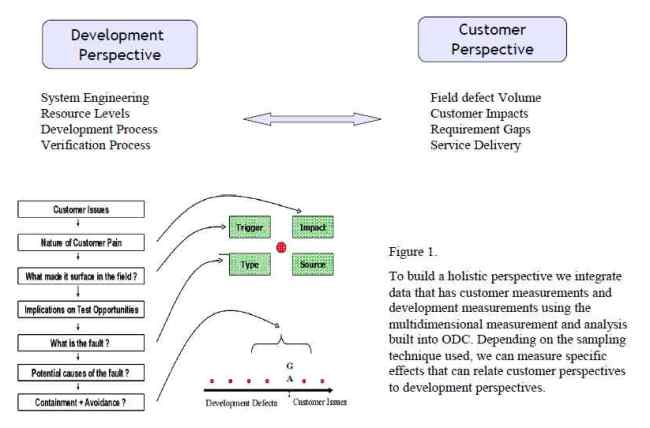An insight into a product development history and customer consequences is possible using ODC in post-process, retrospective mode. These can be performed in a matter of weeks exploiting data that typically exists in the development repositories and customer service call reports. This case study referenced below is a good illustration.

We have a structured process to execute these diagnostic deep-dives. An example is illustrated in a technical paper at ISSRE 2010, San Jose. Here is the outline:
- 1. This paper introduces the notion of ODC Deep Dives that provide a significant insight into the nature of defects faced by a product and their corresponding impact on the customer.
- 2. One of the important advantages of the ODC Deep Dive is that it can be conducted with minimal impact on the development organization. While it is skill intensive and needs experience with analysis methods, it relieves the organization of a long training cycle and data collection process to get insight in cases where speed is essential.
- 3. The retrospective analysis also allows one to draw into the analysis larger spans of time, thereby being able to evaluate changes in the organization and the processes.
- 4. Key to the holistic analysis is to tie customer issues with the traditional software engineering development process issues thereby gaining significant insight.
- 5. Following this approach, one also need not rely on additional consulting resources from marketing to build the customer picture.
- 6. The selective drill down that ODC provides allows one to examine specific software engineering practices and evaluate their effectiveness.
- 7. The data from the exercise gives us a baseline for the product that can be used to examine the effectiveness of the process in future releases.
- 8. Develops recommendations for immediate use, and long term strategy. Given the baseline created by the analysis it allows one to evaluate the impact of the process changes and new practices that are introduced.